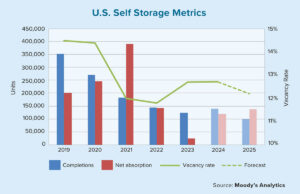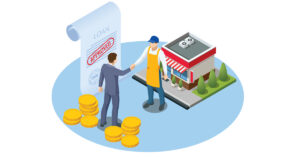With most commercial real estate sales, the buyer must do an environmental assessment to determine if the property has a risk of contamination. Commercial mortgage brokers and their clients ideally hope for clean results that would enable them to close a loan without the need for soil, water and other types of tests. Even if a property needs a full-blown environmental review, however, it need not be a deal killer.
In many cases, the two phases of an environmental review can be done at the same time, shaving weeks from the process, and enabling your clients with tight deadlines to clear the underwriting hurdles and close commercial deals successfully. When you suspect a property likely needs a full environmental review, you can plan for it and keep the project humming along.
Most commercial-property sales require an environmental study of the property to evaluate if any petroleum or hazardous waste lies under the surface. Lenders do not want to be held responsible by federal or state governments for cleanup costs if problems are found later. Under federal law, lenders can be exempted from liability if appropriate due diligence was performed prior to the sale of the property.
There are two levels to the environmental review. The first is a Phase I Environmental Site Assessment (ESA), which involves an investigation into the historical uses of the property to determine if there were any potential contaminants. If that study identifies a risk, the next step is a Phase II ESA, which usually involves testing of the soil, air and water around the property.
The Phase I and Phase II studies are independent of each other and the environmental specialists who do these studies have different training. For certain properties, however, you will know ahead of time that there is a good chance the site needs a Phase II ESA. Properties currently or historically used as dry-cleaning facilities, gas stations, oil fields, or ones that have a landfill on or near the site, will almost certainly require a Phase II ESA.
Commercial mortgage lenders have varying levels of risk tolerance that ultimately determine what kind of environmental assessments will be required.
Review process
In cases where a Phase II study is likely, the two studies can be done semi-concurrently to save time. The Phase I team would begin first, but could communicate with the Phase II team almost immediately about areas that need further analysis and sample collection, along with marking areas of the property for the Phase II team to dig as part of the subsurface investigation.
Prior to visiting the site, the Phase I team will typically have multiple conference calls with the borrower and lender. They also will review prior reports and fill in any data gaps regarding historical maps or online files. An environmental professional will then do a site visit to ensure there are no differences between the historical records and what is on site, and identify issues that might hinder the Phase II team. A few days later, the Phase II subsurface investigations can begin.
When the Phase II team begins testing, the Phase I team is no longer on site, as they are putting together their report based on historical findings and a site visit. After both teams are finished on site, a discussion will occur about whether the client wants separate reports or a conglomerated report detailing all of the findings.
In terms of value, the concurrent Phase I and Phase II studies won’t necessarily save the borrower money, but it will save time and fast-track the loan’s underwriting. Instead of waiting three weeks to begin the subsurface testing, the Phase II team can begin their work in roughly three days, shaving two weeks or more from the process.
Environmental studies, however, can vary tremendously in their cost and scope. Commercial mortgage lenders have varying levels of risk tolerance that ultimately determine what kind of environmental assessments will be required. Some larger banks have their own environmental groups to conduct assessments. Government financiers and guarantors — such as the U.S. Small Business Administration, Fannie Mae, Freddie Mac and the U.S. Department of Housing and Urban Development, for example — require environmental studies and have their own reporting standards. Liability regulations and cleanup requirements also vary from state to state, which influence what the studies entail.
A broker’s role
As a commercial mortgage broker, your biggest concern is how to help manage the due-diligence process and support your clients. First, remember that even though a Phase II ESA is not an ideal outcome, it doesn’t always mean the property will have serious issues or the process will be a deal killer. Above all else, you can be a calming influence for the client.
Second, you should emphasize the importance of transparency during the investigation. The environmental consultant will need access to property records, past tenants and previous environmental testing. A previous Phase II study may have already been conducted on the site. The borrower may not have thought to look for one.
Brokers can help move the environmental review along by drawing on their knowledge of the properties and businesses in an area, and by helping to find knowledgeable people to interview. You also can convey the clients’ needs and troubleshoot potential issues with logistics. Will the investigation disturb the existing occupants or tenants? You can help coordinate times and days for drilling that will help avoid disruption.
One thing you shouldn’t do is to advise your borrower to skip the Phase II study if there is a legitimate risk of on-site contamination. Some borrowers are opting to forego a Phase II investigation when the initial Phase I assessment reveals a risk and instead are getting cost estimates to clean up any potential issues. While this is reasonable and acceptable to some lenders, there are a number of reasons not to go this route. A Phase II ESA is more precise than a remedial cost estimate and presents a more accurate picture of the cleanup cost.
Think of a Phase II review as an opportunity to understand and quantify the environmental risk. A subsurface investigation can reveal no contamination risk. In other cases, if there is some contamination but it carries no risk for human exposure, it can be managed through engineering controls. Even if environmental remediation is needed, remedial cost estimates can be customized and developed to define the risk and provide mitigation options that can be priced into the deal. Most borrowers want to put a number on the costs and understand the specific nature of their risk.
• • •
At this late stage of the commercial real estate cycle, properties with a low likelihood of environmental concern are harder to come by. Whether your client is taking advantage of an opportunity-zone investment, a brownfield redevelopment or adaptive reuse of an industrial property, environmental concerns don’t have to hinder a fast closing.
Author
-
Summer Gell is a principal at Partner Engineering and Science Inc. She has more than 15 years of experience as an environmental scientist, during which time she has provided solutions for environmental and engineering due diligence. Gell is an expert on Fannie Mae and Freddie Mac financing, and has worked on hundreds of agency and multifamily deals. She also serves as the national account manager for several CMBS lenders and life companies. She has a bachelor’s degree in environmental health from Western Carolina University.
View all posts






